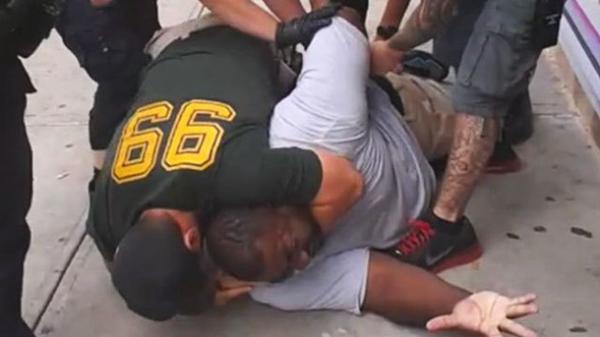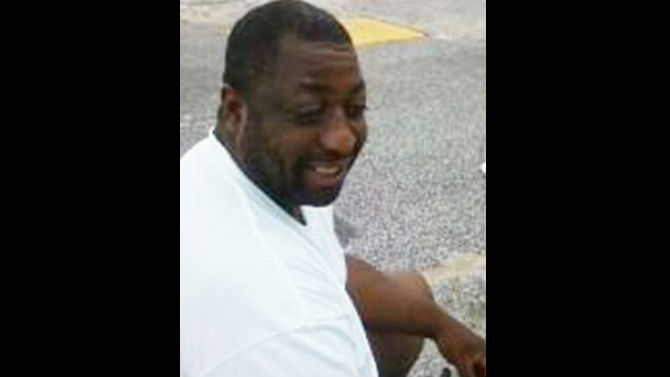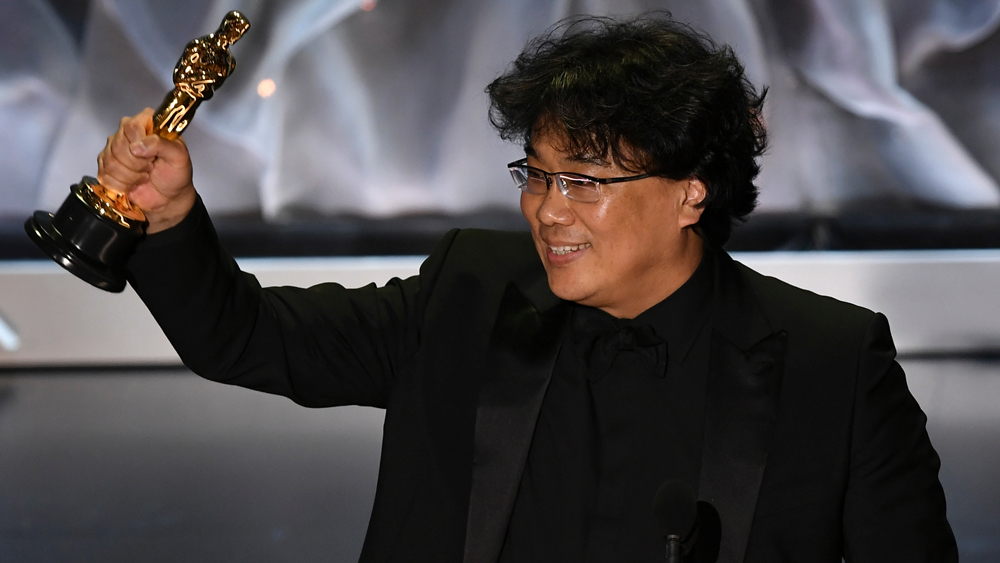This afternoon, a Staten Island grand jury refused to indict New York Police Department officer Daniel Pantaleo in the July 17th killing of Eric Garner, a 43-year-old Black man who died of a heart attack after Pantaleo put Garner in a chokehold, a maneuver illegal for NYPD officers. A medical examiner ruled Garner’s death as due to both the chokehold and restriction of his chest as police officers put their weight on him.
Despite claims that NYPD acted appropriately, a widely circulated video showed police officer conduct in the moments prior to Garner’s death (embedded after the jump).

The video was shot by a witness who tells the camera that Garner had moments before police arrived been breaking up a fight. In the video, a frustrated Garner is seen complaining to officers that he is constantly harassed by police and questioning why they have detained him.
Garner can be heard saying to an officer:
Everytime you see me you wanna harass me. [unintelligble] I’m minding my business, officer. I’m minding my business. Please, just leave me alone. I told you the last time. Please just leave me alone.
Moments later, officers approach Garner and attempt to arrest him. Garner pulls his hands up while saying “Please, don’t touch me.” That’s when Pantaleo can be seen immediately putting Garner into a chokehold. Garner is then wrestled to the ground by several officers, including Pantaleo who can be seen dangling his full body weight from Garner’s throat. Garner can be heard repeating from underneath the police “I can’t breathe! I can’t breathe!” as another plainsclothes officer uses his hand to force Garner’s face into the sidewalk.
Garner died within minutes of being wrestled to the ground, and a second video shows that police waited seven minutes before initiating CPR.
In an outcome unmistakably similar to what happened two weeks ago in Ferguson, Missouri regarding the shooting death of unarmed teenager Michael Brown by police officer Darren Wilson, a Staten Island grand jury returned a no indictment verdict in Garner’s death after months of testimony. This result is not unlike the vast majority of cases involving a civilian death at the hands of police: 538 reports that news coverage suggest that in most similar incidents, grand juries will fail to indict police officers.
Yet, this status quo disturbs because, as 538 notes, this leaves police officers largely immune from prosecution in the use of lethal force against a suspect, most of whom are statistically likely to be Black. Police are in essence given an unspoken, yet widely understood, free pass to assault — sometimes fatally — Black men and women. Police are in essence judge, jury and executioner — a fact that is revealed when we consider that 1 Black man is killed every 28 hours by police in this country.
While most have cited Eric Garner’s final words — “I can’t breathe. I can’t breathe.” — I think it is Garner’s statements moments before those that should really be considered: in them, Garner pleads with officers to stop harassing him. He begs police to leave him alone so that he can mind his own business. He refers to a pattern of excessive scrutiny and harassment. It is a pointed reminder that life for Eric Garner was a life under siege.
In the aftermath of the Ferguson grand jury decision — which elected not to indict Darren Wilson — the President urged Congress to set aside $263 million dollars to equip every police officer in the country with a body camera, an effort supported by Mike Brown’s family. And certainly a body camera worn by Officer Wilson might have offered visual and audio documentation of the circumstances surrounding Mike Brown’s death. It might have confirmed that Mike Brown was shot to death while attempting to put his hands up and surrender, a fact agreed upon by the vast majority of witnesses who testified in the killing. It might have reconciled the discrepancies in the various accounts of what happened, such as how Wilson says he was hit on one side of his face while his injuries appear on the other side.
While police-worn body cameras are both a necessary and a common sense solution, it is still also just a band-aid solution that neglects a deeper, societal problem in this country: our ongoing disrespect, dehumanization, and fear of the Black body.
A video camera did not protect Eric Garner. It did not protect Tamir Rice, Darren Hunt, or John Crawford — all unarmed Black boys and men whose deaths in fatal shootings by police were caught on surveillance video. It did not protect Armand Bennett, who was shot in the head by officer Lisa Lewis who wore a body camera and turned it off before turning her gun on Bennett.
Police-worn body cameras can help advocate for the victims of police killings by establishing the circumstances of a death. A police-worn body camera can make it more difficult for police to cover-up the circumstances of a Black person’s death. A police-worn body camera can show the true ugliness of police brutality, a reality that the vast majority of Americans — privileged by both skin and income — rarely witness firsthand.
But, one thing a police-worn body camera cannot do is make police respect and value Black lives.


